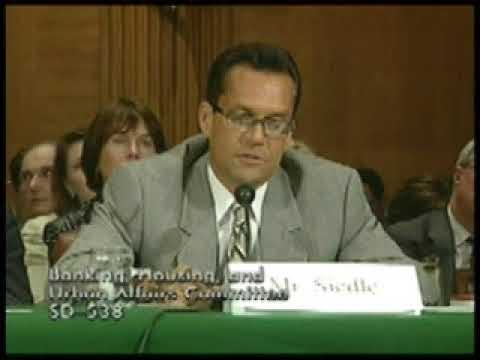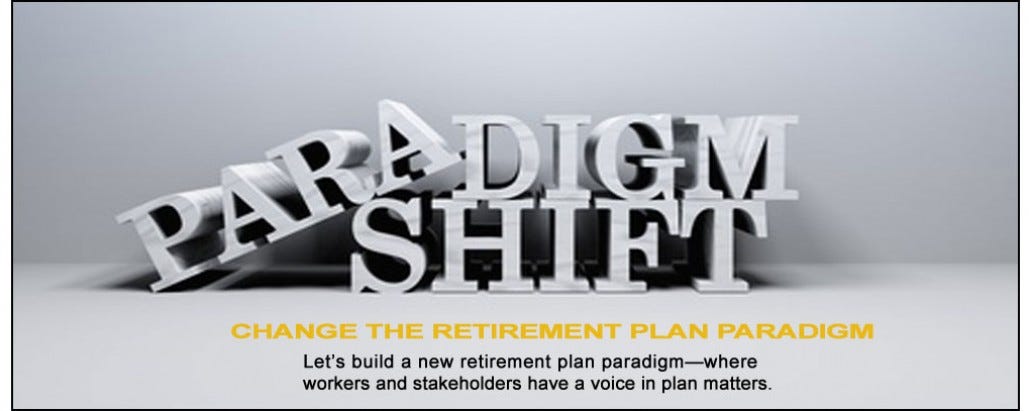Secrets Of The 401k Industry: How Employers And Fund Advisers Prospered As Workers’ Dreams of Retirement Security Evaporated
An Early Report on Economic Self-Interest and “Informational Advantage” in 401ks
Beginning in 2002, with the mutual fund scandals investigated by state and federal securities regulators, compelling evidence surfaced indicating that providers of services to defined contribution retirement plans (commonly referred to as 401ks) had for decades engaged in wrongdoing, often in collusion with one another.
I was invited to testify before the United States Senate Committe on Banking, Housing and Urban Affairs about money management industry abuses in 401ks.
A few years later, I was retained by attorney Jerry Schlichter to advise his firm in pioneering claims of excessive fees and other forms of malfeasance in 401(k) plans. Schlichter and his firm successfully obtained precedent-setting results in approximately a dozen high-profile cases against some of the nation’s largest employers early on. As one commentator has noted:
Schlichter and his firm have obtained settlements in these 401(k) excessive fee cases of more than $300 million for employees and retirees, in addition to significant improvements in their 401(k) plans; in total, this relief has been valued at more than $1.5 billion.
In 2008, while immersed in these groundbreaking cases, I wrote a 50-page report entitled, Secrets Of The 401k Industry: How Employers And Fund Advisers Prospered As Workers’ Dreams of Retirement Security Evaporated. The following is the introduction to the report and a link to the entire report is provided below.
Introduction
In a defined contribution plan, all risk rests with the participants who have no say in the design of the plan or the economic arrangements entered into with and among providers of services to the plan. Generally participants pay most, and increasingly all costs associated with the plan and their investment results depend upon the performance of service providers chosen for them. Unfortunately, of all the parties involved with defined contribution plans, participants (whose monies are at risk) are least knowledgeable regarding complex, opaque investment management industry practices.
Given that the majority of participants work 40-60 hours a week, it is unreasonable to expect that they will (in their spare time) acquire the expertise to skillfully sift through the numerous investment alternatives that have been provided to them and craft an optimal retirement savings program.
Given that the majority of participants work 40-60 hours a week, it is unreasonable to expect that they will (in their spare time) acquire the expertise to skillfully sift through the numerous investment alternatives that have been provided to them and craft an optimal retirement savings program.
Employers, aka plan sponsors, are more knowledgeable than participants but, given that over 92% of defined contribution plans have less than $5 million in assets and have no full-time employee with investment expertise responsible solely for the plan, an overwhelming majority of sponsors rely upon providers for turnkey solutions to plan needs. These providers largely control the flow of information to sponsors and (with the consent of the sponsor) are responsible for communications to participants. Not surprising, providers of services to plans have taken advantage of their “informational advantage” and the inability of sponsors and participants to commit time to scrutinizing economic arrangements between providers and plans.
Providers of services to 401k plans have prospered even as participants have suffered mediocre results.
Providers of services to 401k plans have prospered even as participants have suffered mediocre results.
Sponsors, freed of liability related to these plans, have little incentive to intervene. As a result of lack of transparency regarding questionable industry practices, the market for defined contribution retirement plan service providers, including record-keepers and investment managers, remains uncompetitive despite a large number of vendors and plan sponsors. Excessive fees and poor performance are commonplace. Yet providers maintain the industry is not to blame for these unfortunate results. Industry solutions to problematic performance (such as target date funds and personalized financial advice) inevitably involve heaping even greater costs onto investors, further reducing the likelihood of satisfactory net performance. Dissatisfaction with defined contribution plans has grown as evidence of wrongdoing has mounted (and the markets have faltered) and is at an all-time high.
An analysis of economic self-interest related to the providers of services to defined contribution retirement plans and plan sponsors reveals that many of the problematic investment options, practices and arrangements within plans can be readily explained as benefitting all parties except participants.
…many of the problematic investment options, practices and arrangements within 401k plans can be readily explained as benefitting all parties except participants.
The “informational advantage” that sponsors and providers enjoy over participants permits this state of affairs to endure. While the impact of economic self-interest and the informational advantage on defined contribution plans may seem remote, it is real. Recent studies confirm that plan design (almost always controlled by providers), does matter and can influence participant behavior and investment returns. In other words, industry practices have played a significant role in creating the defined contribution retirement plan crisis the nation faces today.
The demise of 401ks was no accident and, indeed, was predictable.
In order to improve participant behavior and investment results, disclosure of all economic agendas at play, at a minimum, must be compelled. Absent a regulatory overhaul of defined contribution plans, increased transparency is the sole tool available to reduce the costs and improve the performance of these plans. While hardly a perfect cure, “sunshine” remains a powerful disinfectant.





